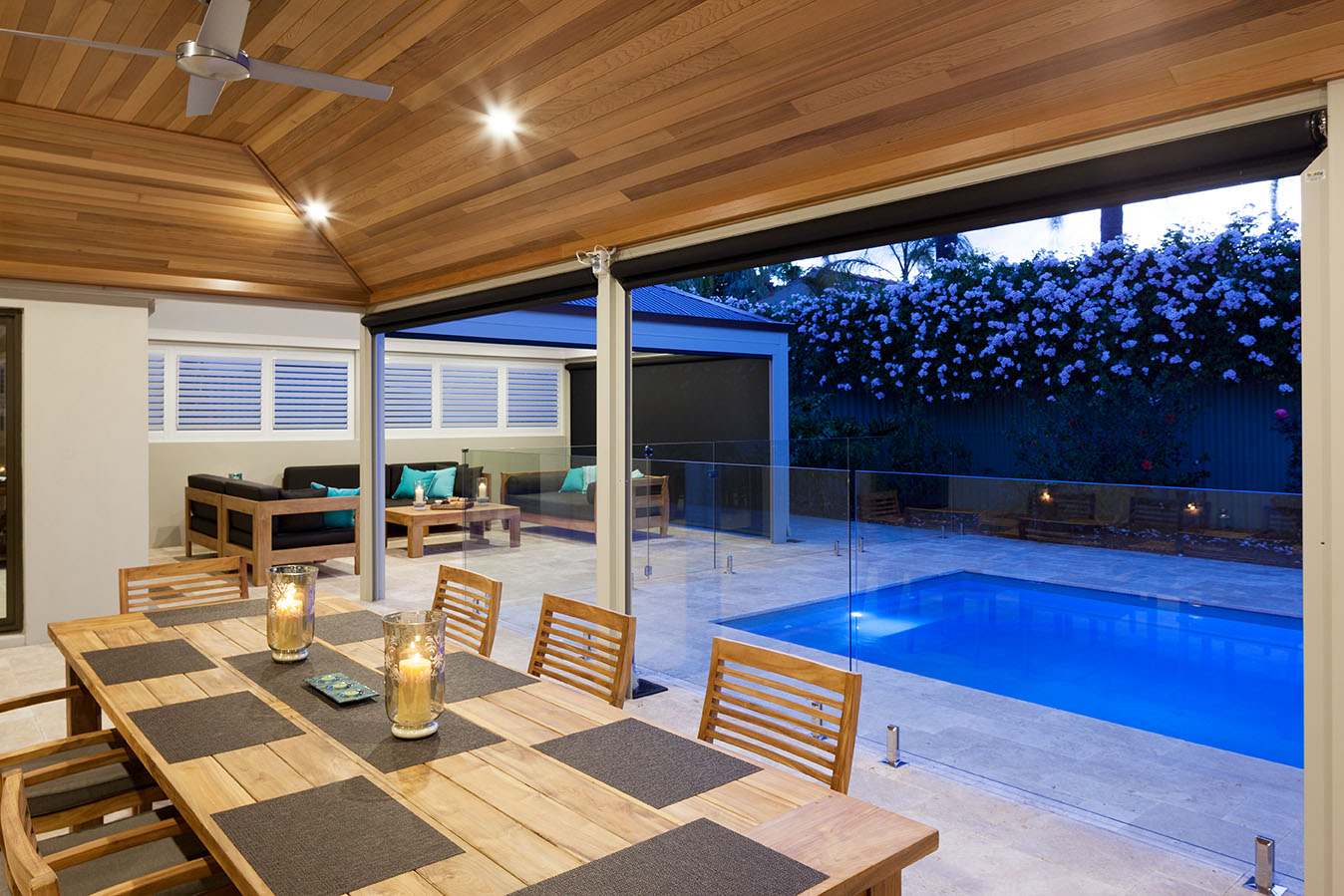
Alfresco Furniture versus Indoor Furniture: What’s the Difference?
Home decorating can come as easy as stacking shelves for some people, but for others it can be more confusing than solving a rubik’s cube in greyscale.Interior design is one thing, but decorating an outdoor room is an altogether different thing. For one, you can’t just use any furniture you would use for your indoors – there’s are some differences, and you should know them if you want to make the most of your patio.

WE ARE MADE OF STARSTUFF – BUT WHAT OF YOUR FURNITURE?
Renowned Astrophysicist Carl Sagan once said that we are all connected – and everything is made of starstuff. While all that may be true, that was all billions of years ago, and I doubt if any of us will ever find out how starstuff would hold up against a Perth winter. What we do know is that materials like fleece or suede would be ruined out in the open on your al fresco.
Treated woods and hardwoods for furniture are best suited for outdoor use. Stone and concrete surfaces are also perfect for outdoor tables and the like. The short of it: know what your furniture is made of, and if it’s suited for your outdoors. Here’s a quick guide:
Indoors:
Any material that retains water would be best kept indoors to ensure that it stays dry and away from exposure to the elements. This means most fabrics and carpets, as well as materials like leather and suede that take damage from moisture. Not only would they be a pain to dry should they get wet outside, but they will almost always encourage mold growth and wood rot, which could damage other parts of your patio.
Ironically, there are certain types of wood that are NOT advisable for outdoor use and as such are often reserved for indoor furniture. Untreated pine, maple, aspen, hemlock, alder, birch, poplar are some examples.
Outdoors:
As mentioned earlier, treated woods and hardwoods make for the best materials for outdoor furniture. Stone and concrete tables are perfect to weather out the storms and heat that are expected with an outdoor room. Other materials that make for great outdoor furniture are metals like aluminum, zinc hardware, wrought iron and the like. Waterproof nylon and polyresin plastics also make for useful outdoor materials.
To add to the list, you can also give your wood furniture further protection from the elements by painting it. Painting wood can be as simple as applying a few coats and you can then rely on it to withstand the outdoors – or at least the typical exposure to the elements afforded by being placed on your al fresco.
To sum up, aside from the obvious judgment call you will make about fabrics that could get wet and retain water, it’s ultimately up to a homeowner to know what a piece of furniture is made of to tell whether it would make a good fit for the al fresco. If unsure about what your existing furniture is made of and whether it would work for your outdoor room, you can always give its manufacturer a ring, or consult an expert.